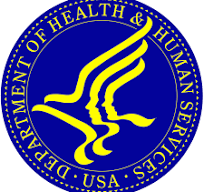The Centers for Medicare and Medicaid Services runs with an annual budget of $1.5 trillion—22% of the total federal budget. That’s more than the Defense Department! With this massive responsibility, CMS is at the heart of the U.S. healthcare system, overseeing programs and policies that touch the lives of nearly every American.
Running an agency with such a scope and impact requires a leader with deep administrative experience managing large budgets and complex systems.
What Does CMS Do?
CMS, located within the US Department of Health and Human Services, plays a pivotal role in administering Medicare, the federal program that provides healthcare for Americans over 65 and those with certain disabilities. They’re also responsible for making sure states are implementing their Medicaid programs following federal law and regulations. Beyond that, CMS ensures states manage their Medicaid and Children’s Health Insurance Programs in line with federal standards.
CMS also regulates a large portion of the private insurance market. The agency oversees health plans offered through the Affordable Care Act marketplaces, ensuring they follow ACA requirements. This includes setting standards for coverage, protecting consumers from discriminatory practices, and fostering affordability and accessibility in health insurance.
Another essential part of CMS’ mission is quality assurance. The agency ensures that healthcare facilities receiving Medicare and Medicaid funds meet rigorous standards. From hospitals to nursing homes, CMS holds care providers accountable to ensure safety, effectiveness, and dignity in the services they offer.
These programs collectively provide care for millions of vulnerable Americans, making CMS critical to the health and well-being of the nation.
With such enormous responsibilities, CMS is arguably one of the most consequential federal agencies. That’s why choosing a leader for this organization is not a decision to take lightly.
President Trump’s proposal to appoint Dr. Mehmet Oz, a TV personality with little administrative or managerial experience, raises serious concerns.
Running CMS is not about charisma or media skills; it’s about managing a vast and complex system that directly affects the health of millions and the stability of our economy.
The stakes couldn’t be higher.
For an agency overseeing 22% of the federal budget and shaping the health of a nation, we need a leader with proven experience in managing large organizations and navigating complex systems—not someone whose background is in entertainment.
Let’s hope that in this critical moment that the US Senate actually does their job during the confirmation process for Mr. Oz.
I. for one, am not confident they will.







